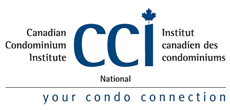Part 12 published on 01/11/05
Court deal with corporation’s right to carry out repair or maintenance on behalf of owners
The condominium corporation made application to the Court for an Order granting the corporation entry (to residential units) in order to carry out mould remediation on fan coil units. The corporation relied on Section 117 of the Condominium Act, 1998, asserting that there existed an unsafe condition (namely, the risk of dispersal of dangerous mould, due to inadequate maintenance of the fan coil units).
The corporation argued that its experts had recommended a higher level (and more expensive method) of mould remediation than had been carried out by the respondent owners. The corporation had directed all owners to arrange for maintenance of their fan coil units in accordance with the recommendations of the corporation’s experts. Most of the owners followed these directions, and also used the corporation’s recommended contractor to carry out the work. Some of the owners (the respondents in the application) disagreed with the mould remediation procedure directed by the corporation. Those owners used a lower-level, less expensive procedure. They then refused the corporation’s demand for access in order to arrange for the higher-level remediation (with the costs then to be added to the owners’ common expenses). In the face of this refusal, the corporation brought its Court Application.
The Court ruled against the corporation.
The Court came to the following conclusions:
(a) The fan coil units were, at first instance, the responsibility of the owners. The corporation could intervene only if the corporation could prove that there was an unsafe condition. [The Court said that this was the test under both Sections 92 and 117 of the Act.]
(b) There was no evidence that the lower-level remediation did not effectively eliminate the mould risk.
(c) Mould in the fan coil unit of a particular apartment was a risk only to that one apartment. There was no evidence that the mould could move to other apartments.
(d) The corporation was obligated to fully and fairly consider all reasonable alternatives for the work. In this case, this included the less expensive method preferred by the owners.
(e) The corporation’s professional advice did not clearly and absolutely refute the remediation method preferred by the owners.
[Editorial Note: In my view, this is a very important decision. As far as I can recall, this is the first reported decision dealing with the rights and responsibilities of condominium corporations relating to repair and maintenance obligations of the unit owners. In this case, the Court essentially says that the condominium corporation must very clearly prove that there is a risk of harm, if the condominium corporation is to intervene. Furthermore, the Court seems to be saying that the condominium corporation must prove that there is a risk of harm to other persons or properties (outside the unit).
I would not have been surprised to see the Court take another approach. In particular, I would not have been surprised to see the Court decide that condominium corporations must be very careful to protect the safety of all occupants of the building. (Certainly we have seen the Courts express these sorts of sentiments in relation to in-suite smoke detectors.) So, I would not have been surprised to see the Court decide that condominium corporations must take action if there is any doubt about the safety of any of the occupants (including all occupants of the same unit which contains the risk). In this case, the Court seems to be saying that the condominium corporation must clearly prove the existence of a risk and must also show that the risk is to persons or property outside of the particular unit.]
